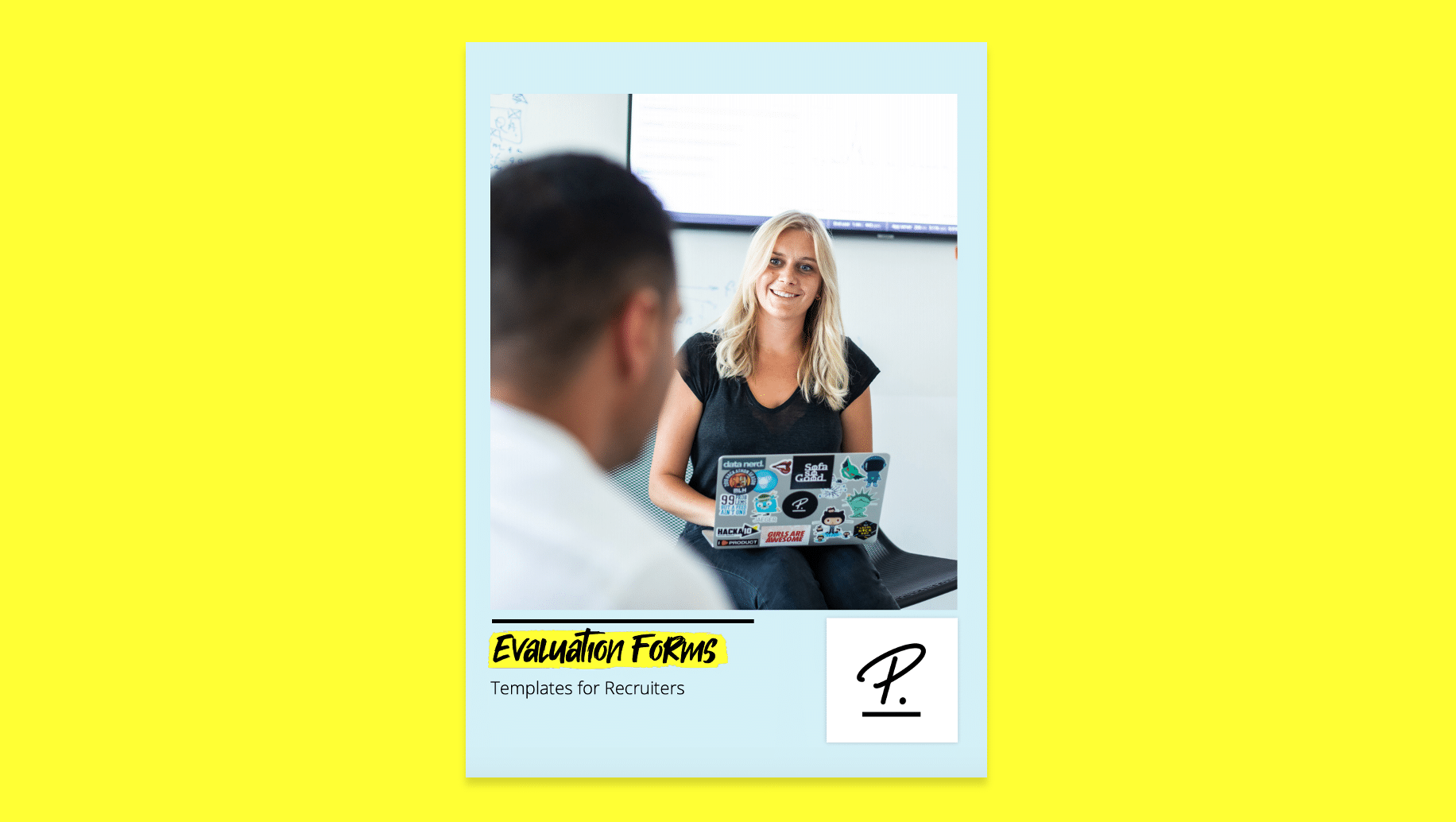A Recruiter’s Guide to Shortlisting Candidates

Shortlisting candidates is one of the most effective ways to optimise your hiring process. It improves the candidate experience, cuts down time-to-hire and leads you to the best possible person for the job.
In this article, you’ll learn what candidate shortlisting involves and how you can use it to streamline your next round of hiring.
Give your hiring team the tools they need to win the war for talent.What Is Candidate Shortlisting?
Shortlisting candidates is the process of reviewing job applications and selecting the candidates that are best suited for the position based on predetermined criteria, thus creating a shorter list of qualified candidates to move forward with.
Think of it like this: The application deadline has passed, and now, it’s time to sift through resumes and cover letters to identify your organisation’s next great hire. Someone who checks all the boxes on your list of essential and desirable criteria and fits well into the company culture.
Here’s where shortlisting fits into the hiring process:
Publish the Job Advert
Collect Applications
Screen and Shortlist Candidates
Conduct Interviews and Assessments
Send the Job Offer
Is Shortlisting Candidates The Right Move For Your Team?
Shortlisting is beneficial for any hiring team, whether you average a dozen or a thousand job applications for a position.
Why? Because it does more than just save you time — it improves the end-to-end experience for your hiring team, for successful candidates and even for the candidates you turn down.
Here’s when you should consider shortlisting candidates:
You want to save money and resources by hiring right the first time.
You want to make the hiring and recruiting process more manageable.
You want to improve the candidate experience.
You want to discover and set standards for your hiring processes.
You want to determine if your approach to recruitment and talent acquisition is effective.
Source the best talent around

Design career pages, create job ads and publish them on more than 600 portals with just one click. Say hello to seamless recruitment with Personio.
Find the Talent You NeedShortlisting Candidates In 6 Steps
For many talent acquisition leaders, the hardest part of employee recruitment is identifying the right candidates from a large pool of applicants.
Here’s how to beat the overwhelm and find the right candidate faster through shortlisting:
1. Know How To Navigate Bias And Avoid Unlawful Discrimination
The shortlisting process needs to be fair and free of bias. You have to remain objective and not allow your opinion or perception of a candidate interfere with the facts of their candidacy.
A part of your shortlisting process should focus on reducing subconscious and conscience biases, which helps protect your team from accusations of unlawful discrimination.
In the UK, you can’t eliminate a candidate for consideration due to a protected characteristic, as per the UK’s Equality Act 2010. Protected characteristics include:
Age
Disability
Race
Religion or belief
Sex
Sexual orientation
Pregnancy and maternity
Gender reassignment
Marriage and civil partnership
To reduce chances of discrimination or bias, involve at least two experienced HR or recruiting specialists in the shortlisting and candidate selection process.
2. Establish Your Hiring Criteria
Your hiring criteria should be based on the most up-to-date version of the job description. What skills, qualifications and competencies are required for the role?
It may help to cross-check the criteria with the relevant team leader — or an employee with experience in that role — to determine if any updates are necessary.
Once you have your list of criteria, organise it into three categories: Mandatory, Preferred and Desirable.
Your mandatory criteria include all of the must-have skills and qualifications needed to perform the job successfully, such as:
Minimum education level
Proof of relevant experience
Workplace safety training or certifications
Location (if you don’t work remotely)
Language fluency
Approved background check or security clearance
Your preferred criteria are the nice-to-haves. Usually, these are things that can be taught or learned along the way. If a candidate already possesses these qualities, though, it gives them an advantage over the competition.
Some examples include:
A working knowledge of relevant software, tools or programs
Experience in a specific industry
Professional certifications
Your desirable criteria include all of the value adds that give a candidate bonus points, such as:
A working knowledge of semi-relevant software, tool, or program
Values, mission and goals that align with the organisation
Finally, make sure your criteria doesn’t directly or indirectly discriminate against protected characteristics, as outlined above.
3. Create A Candidate Scorecard
Now that you have your mandatory, preferred and desirable criteria set, it’s time to create a candidate scorecard.
With this scorecard, you can compare candidate score against candidate score, instead of comparing person against person, which helps decrease chances of bias and discrimination.
First, assign a numerical value to each criteria depending on how important it is in relation to the open position. In this example:
Mandatory Criteria = 3 Points
Preferred Criteria = 2 Points
Desirable Criteria = 1 Point
Next, review each candidate and assign them points based on whether or not they possess the criteria. The candidates with the most points will then move on to your shortlist.
Candidate ID | Mandatory Criteria | Preferred Criteria | Desirable Criteria | Total Score |
|---|---|---|---|---|
Criteria 1/Criteria 2 | Criteria 1/Criteria 2 | Criteria 1/Criteria 2 | ||
Candidate A | 3/3 | 2/2 | 1/0 | 11 |
Candidate B | 3/3 | 0/0 | 1/1 | 4 |
Candidate C | 3/3 | 2/0 | 0/1 | 6 |
4. Decide How Many Candidates You Want To Interview
How short should your shortlist be? That will depend on the amount of time and resources you have available.
Review your organisation’s hiring history and relevant data to estimate how long it will take to identify, hire and onboard your new employee, as well as who needs to be involved in the process. If you have a tight timeline, keep your shortlist to a minimum.
You could also base your shortlist’s length on the candidates’ scorecard results. For example, if your final score was out of 20, candidates who received final scores of 18 or above would be selected to move forward.
If you’re looking for further guidance, consider this: According to a 2021 report, the average applicant-to-interview conversion rate is 15%. So as a rule of thumb, for every 100 applications you receive, 15 should move on to the next round.
Whatever number you land on, use it as a loose guide, not a hard rule. If you set your shortlist limit to 10 candidates, but there are 12 highly qualified candidates, don’t cut them off the shortlist just for the sake of sticking to your predetermined limit.
On the flip side, you don’t want to include less qualified candidates on your shortlist just to hit your target.
5. Notify Successful Candidates
Once you’ve identified your shortlisted candidates, it’s time to tell them the good news!
Reach out to successful candidates with a congratulations as well as instructions for the next steps, whether that’s scheduling a screening call, video interview or skills assessment.
A proper Applicant Tracking Software (ATS), like Personio, can help at this stage of the game. Automatically reaching out to clients with templated and personalised emails.
6. Send Non-Acceptance Emails
When you’re on the job hunt, getting no reply from a company can be even more frustrating than getting a rejection email. Once you’ve determined that a candidate isn’t moving forward, send them a non-acceptance email as soon as you can.
It helps to gently explain why they weren’t selected for the position. That way, they are left with a positive impression of your organisation and may even apply again in the future, should a better-suited position open up.
5 Innovative Shortlisting Techniques To Try
The hiring process has experienced a lot of modernisation over the last few years. Instead of paper applications piling up on your desk, digital versions are filling up your inbox.
And thanks to AI and automation, "intelligent shortlisting” has likely already come to an ATS near you.
Here are five innovative candidate shortlisting techniques that can help you through the hiring process:
1. Blind Applicant Screening
To reduce chances of bias or discrimination, try blind applicant screening (also known as blind hiring).
This process involves removing all demographic information from applications before they’re seen by the hiring manager, leaving only the criteria that are relevant to the position.
Your ATS may already have blind screening built-in. If not, you can do it manually by exporting your candidates’ information and removing demographic information.
Alternatively, you can request candidates remove certain information from their resumes and cover letters before applying.
2. Use A Modern Applicant Tracking System
Applicant Tracking Systems help you manage, track and organise your recruiting process, all in one place.
Personio’s Applicant Tracking Software makes it easy to streamline the hiring process, reduce the time-to-hire and find your next great team member, even in a sea of applications.
With it, you can…
Prioritise applications
Automate candidate communications
Create and send job offers
Analyse your hiring data
And more…
3. Bring In The Chatbots
Forty-one per cent of hiring managers said they struggled with effectively screening candidates pre-interview. Can chatbots be the answer?
Like other automated systems, you can use chatbots for initial applicant screening by programming them to answer candidates’ yes or no questions.
You can also use them to schedule phone calls or video call interviews, and answer candidates’ frequently asked questions with more thorough replies.
4. Include Early Assessments
Typically, candidates complete skill assessments after a round or two of interviews. But implementing assessments early on in the process will help you weed out unqualified candidates sooner.
If you want to be really proactive, include an assessment in the form of a survey during the application process itself. That way, you’ll only receive high-intent job seekers who are serious about the position.
5. Be Human And Holistic
To create a well-rounded and innovative team, you need diversity. While AI and automation have their place in the recruiting process, shortlisting still requires a human touch.
If you can, comb through applications manually to ensure high-quality candidates haven’t fallen through the automated cracks.
A lot of applications are filtered out by keywords. But by solely relying on automation, you could miss out on candidates with unique experiences and transferable skills that can bring fresh perspectives and ideas to your team.


